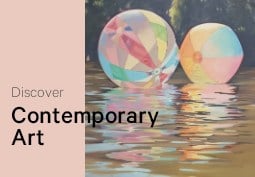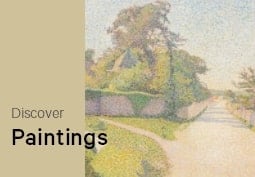Articles and Features
Art Movement: American Realism
By Shira Wolfe
In the early 20th century, American Realism became an important movement in the United States, spanning literature, music, and the visual arts. As the United States rapidly developed during the late 19th and early 20th century, with great industrial, economic, and socio-cultural changes, the wish to capture the American landscape and urban spaces in a realistic manner through art appeared. The focus lay on portraying the average American and showing the essence of the American landscape and cities. At the center of this was a group of artists called The Ashcan School or The Eight, as well as a movement called American Regionalism.
The Ashcan School or The Eight
In early 20th-century New York, a group of artists started capturing everyday life in the city by creating realistic paintings of architecture and urban dwellers, mostly working-class. These artists came to be known as The Ashcan School or The Eight. Rebelling against American Impressionism, these artists focused on showing the city’s vitality and grit, with an eye on the socio-political developments. Read on to learn more about the artists that were considered members of the Ashcan School.
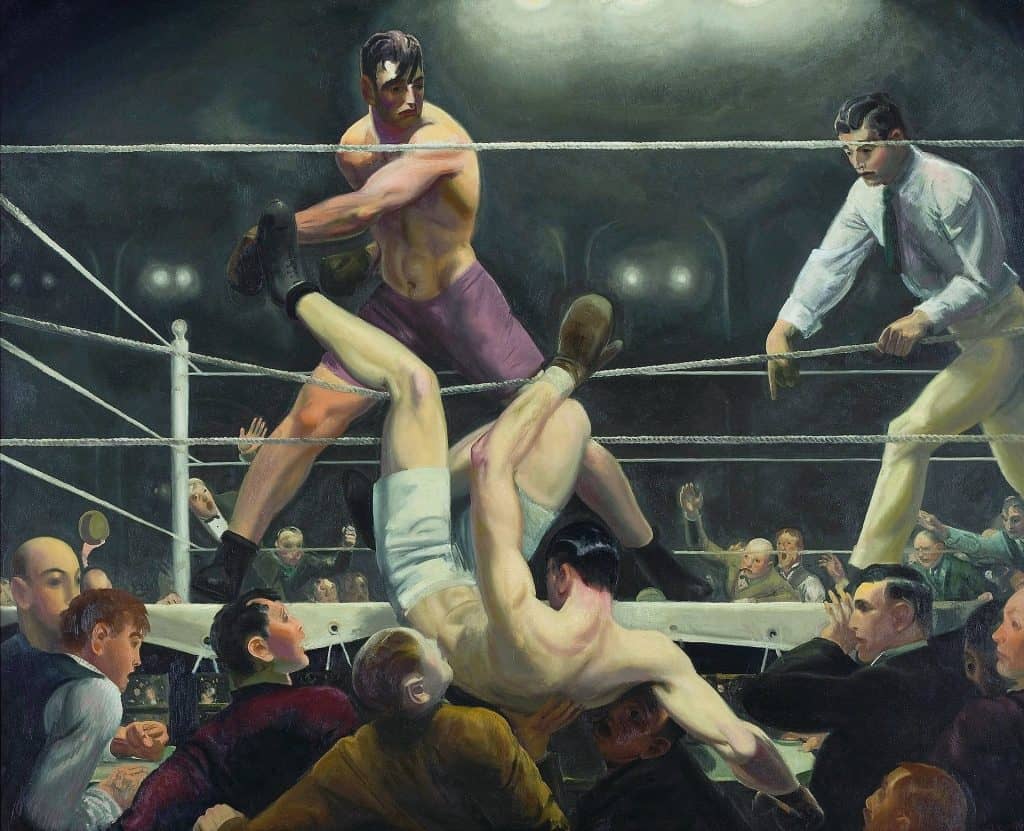
George Bellows
George Bellows was fascinated with the violence and brutality of city life and showed this in his paintings of dirty crowds on the streets, graphic boxing scenes, and darkly lit urban settings. Especially his paintings of boxing matches made a mark on art history.
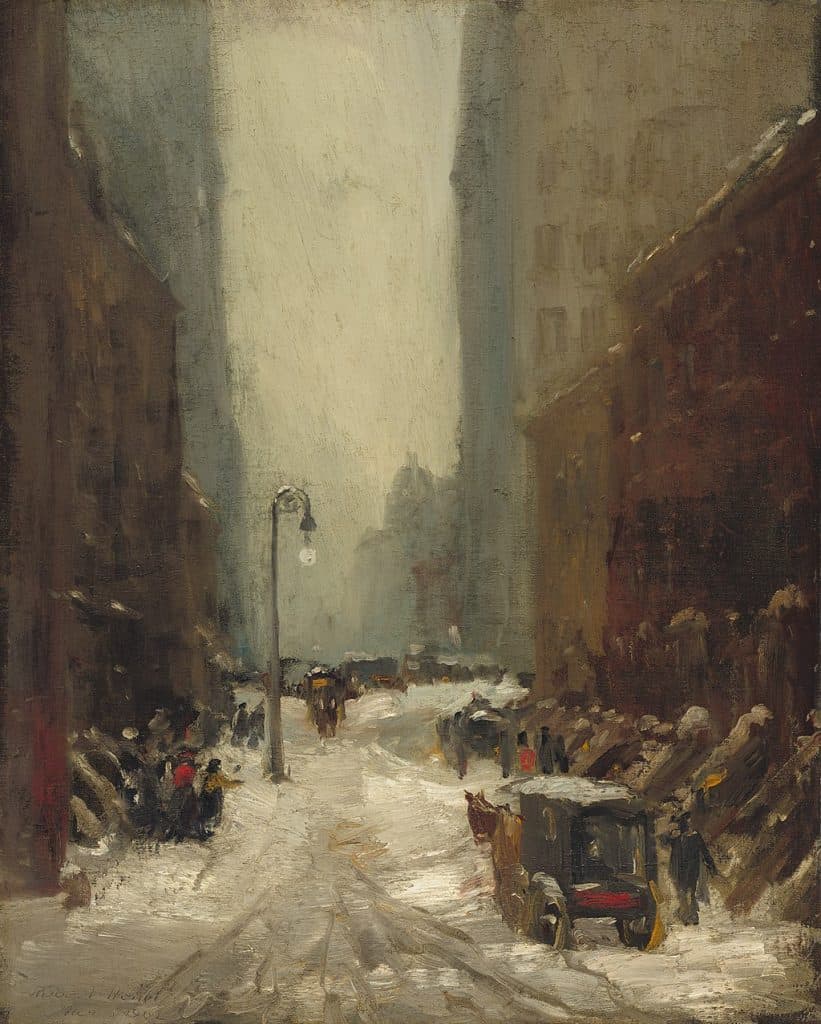
Robert Henri
By the early 20th century, Robert Henri, initially trained in Impressionism, became eager for a more realistic form of art that would better describe his times. For him, the focus was the spectacle of everyday life. With vigorous brushstrokes, he showed passing strangers in the streets, approaching the canvas in a journalistic manner to get to the bottom of people’s lives in the modern city.
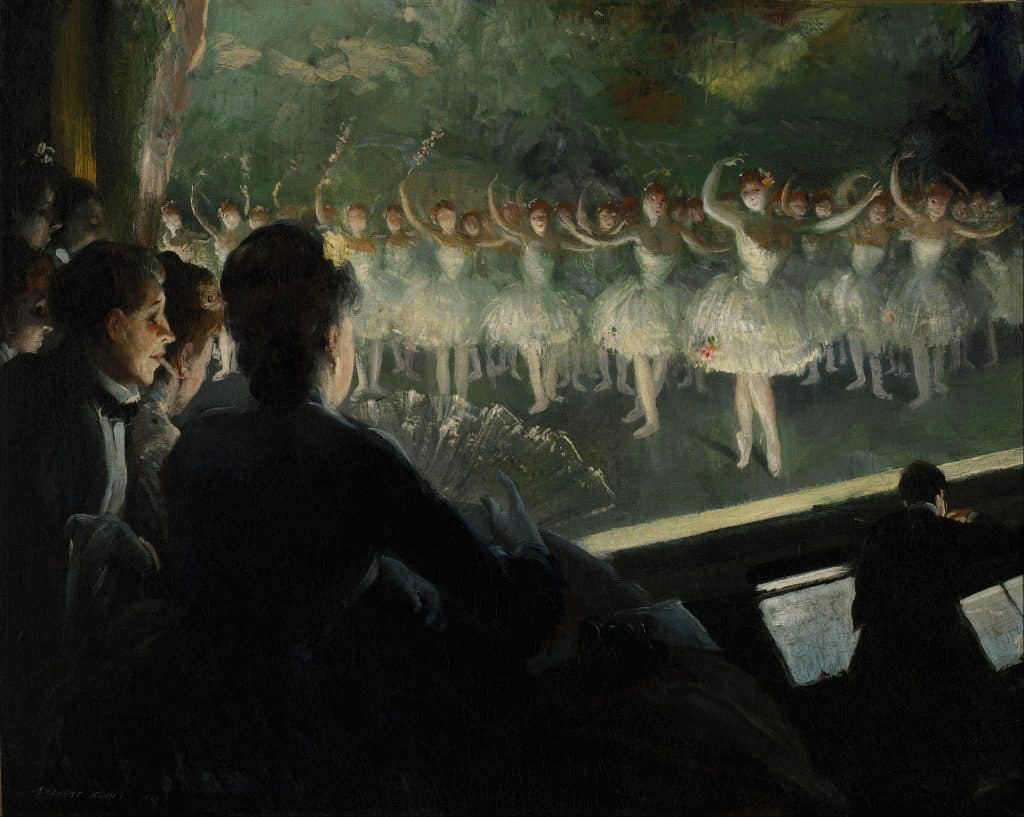
Everett Shinn
Everett Shinn was famous for his paintings of New York theaters, at times reminiscent of the work of Degas, although unlike Degas he was mainly fascinated with the interaction between audience and performer. Shinn was the youngest artist in The Ashcan Group and was the only one among them who preferred working with pastels.
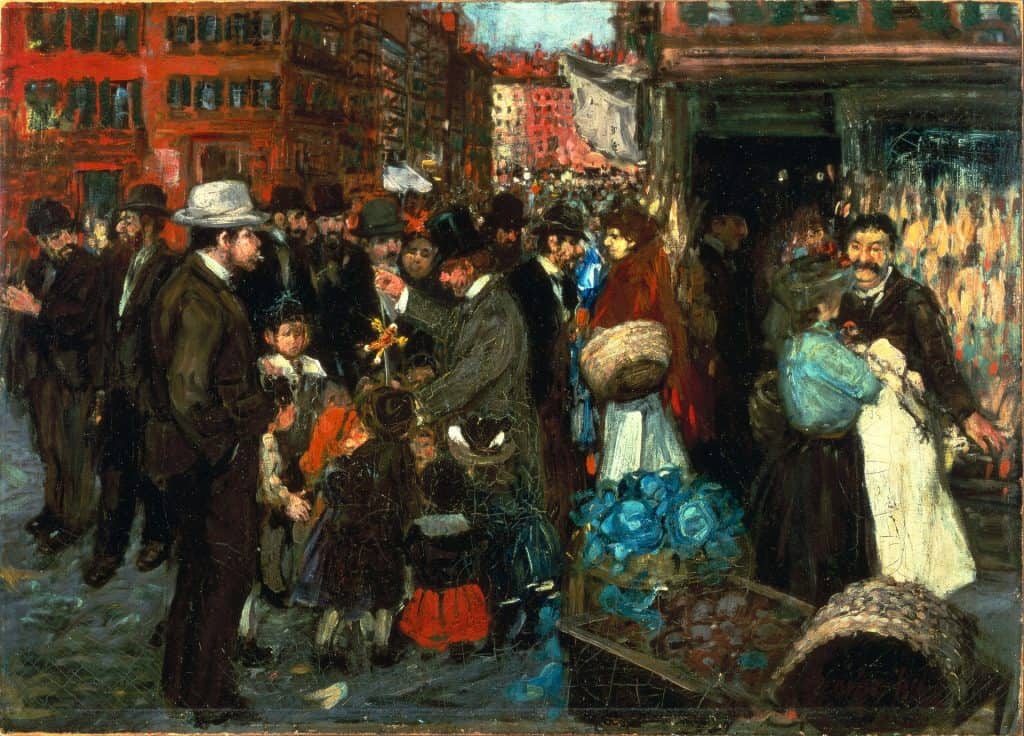
George Benjamin Luks
George Benjamin Luks became best known for his paintings that showed the difficult lives of the poor living in Manhattan’s Lower East Side. Rather than focusing on the tragic aspects, he tried to show the joy and the beauty in these lives as well.

William Glackens
William Glackens was one of the founders of The Ashcan School. In his art, he focused on the area around his studio in New York, Washington Square Park. He also worked as a commercial illustrator, making humorous portrayals of New Yorkers.

John Sloan
John Sloan was most interested in portraying the daily lives of ordinary people, for example in his beautiful painting McSorley’s Bar, painted in 1912 after he started frequenting the bar himself. Sloan also contributed drawings to the socialist monthly The Masses and taught at the Art Students League.
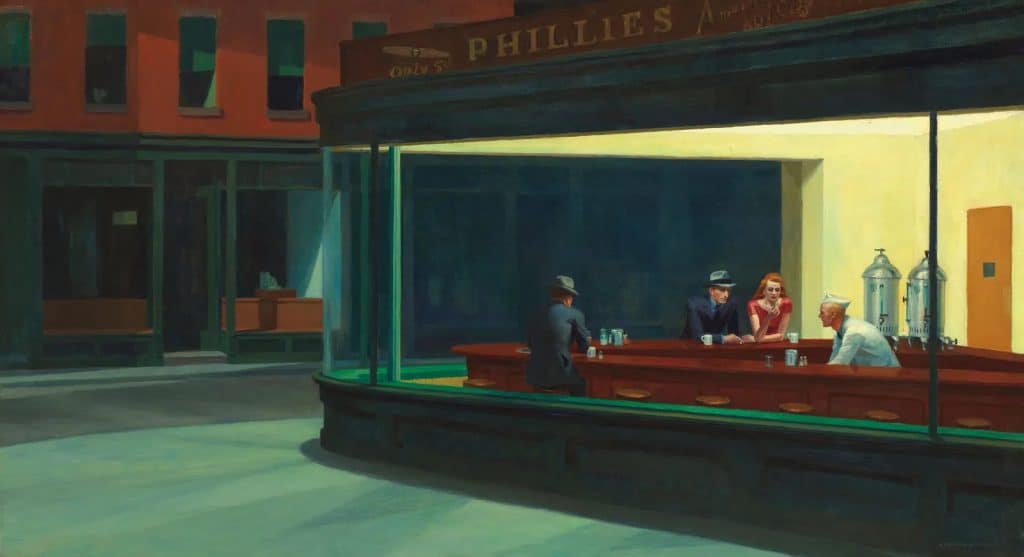
Edward Hopper
Arguably the most famous of the group, Edward Hopper himself actually rejected his inclusion and felt his paintings were done in a different spirit. Hopper is the most modern of the American realist artists with the most clearly defined style. He became famous for his portrayals of American landscapes and urban scenes that were at once serene and alienating.
American Regionalism
American Regionalism appeared as a reaction to the Great Depression and mainly depicted rural and small-town scenes in the Midwest. Giving people an honest insight into the agricultural communities in the United States, the movement reached its peak of popularity between 1930 and 1935, as people were attracted to the comforting, realistic images of rural America. The most respected artists of American Regionalism were Grant Wood, Thomas Hart Benton, and John Steuart Curry, also known as the “Regionalist Triumvirate”.
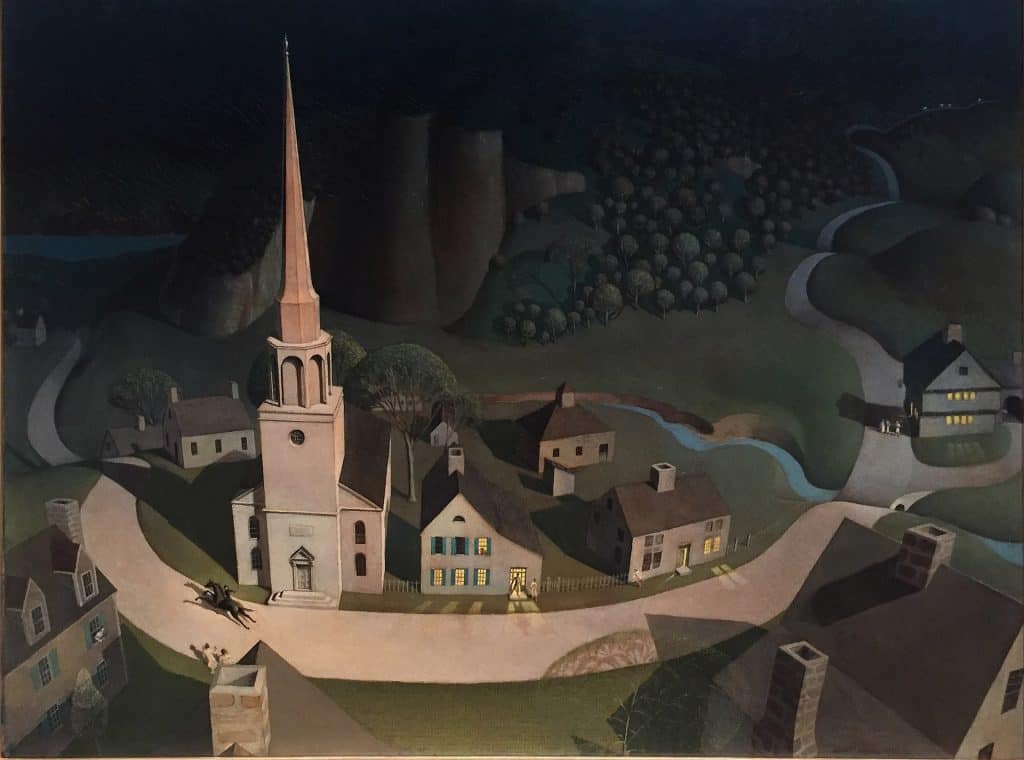
Grant Wood
Native Midwestern Grant Wood became famous for his paintings of archetypal rural characters, executed in a distinctly polished style inspired by realist Flemish Renaissance art. His painting American Gothic is perhaps one of the most iconic American paintings of the 20th century and became the quintessential image of the Great Depression Era.

Thomas Hart Benton
Thomas Hart Benton became known for his murals portraying working-class Americans, inspired among others by the Mexican Muralists. Declaring himself an “enemy of modernism”, Benton embraced a realist and naturalistic style. In 1934, Benton was featured on the cover of Time Magazine, shown alongside Grant Wood and John Steuart Curry. The three were hailed as the new heroes of American art.

John Steuart Curry
John Steuart Curry started his creative career doing illustrations for Wild West stories and was then hired as a muralist during the Great Depression. He did not live in his native Kansas as an adult, and instead connected with his place of birth by painting it. His nostalgia for rural Kansas life included depicting all of its natural disasters such as tornadoes, dust storms, and floods.
Relevant sources to learn more
Learn more about the most famous art movements and styles
Portraits of America: Grant Wood’s American Gothic
Discover the realist murals of Mexican Muralist Diego Rivera

